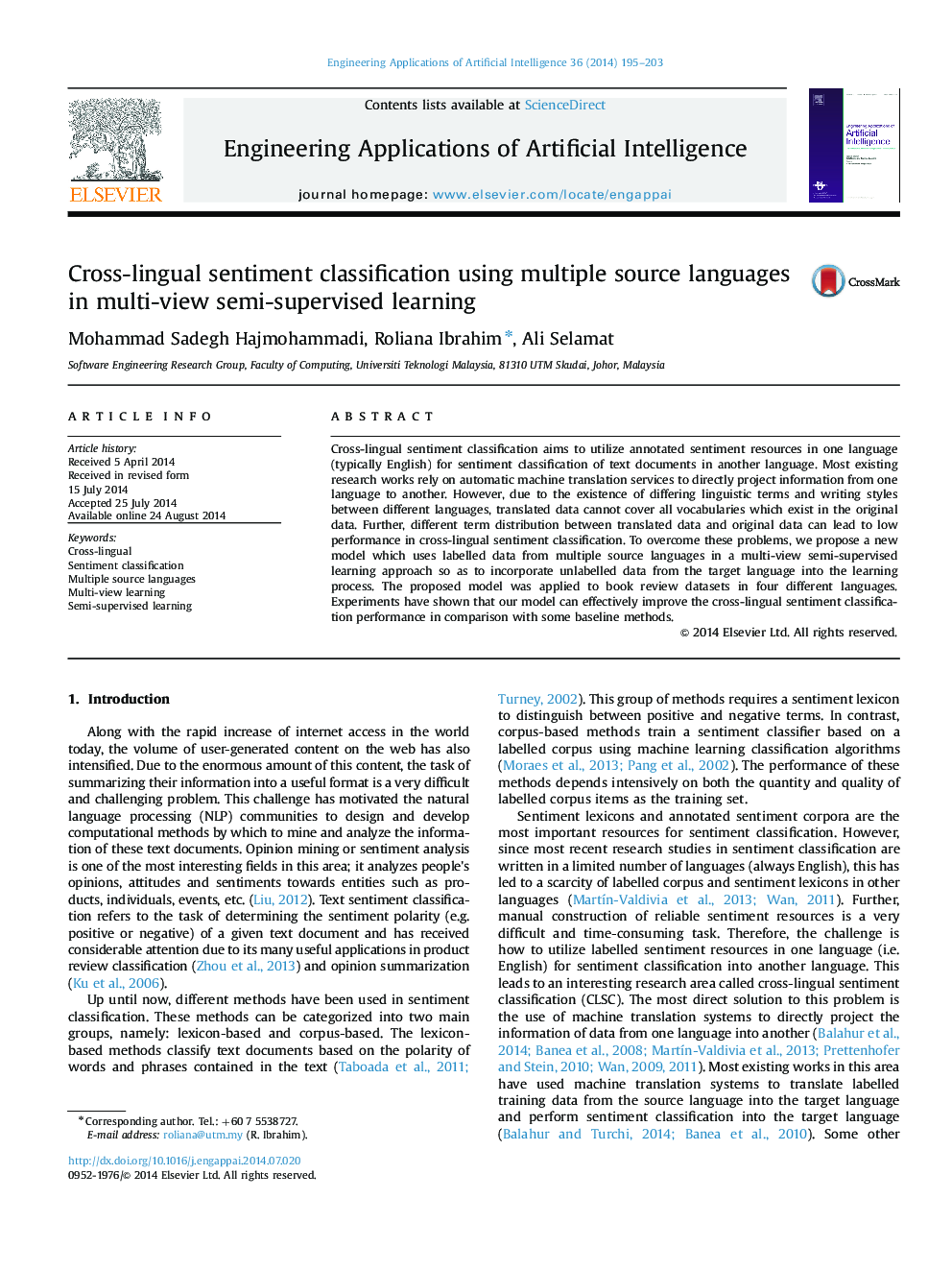| Article ID | Journal | Published Year | Pages | File Type |
|---|---|---|---|---|
| 380458 | Engineering Applications of Artificial Intelligence | 2014 | 9 Pages |
Cross-lingual sentiment classification aims to utilize annotated sentiment resources in one language (typically English) for sentiment classification of text documents in another language. Most existing research works rely on automatic machine translation services to directly project information from one language to another. However, due to the existence of differing linguistic terms and writing styles between different languages, translated data cannot cover all vocabularies which exist in the original data. Further, different term distribution between translated data and original data can lead to low performance in cross-lingual sentiment classification. To overcome these problems, we propose a new model which uses labelled data from multiple source languages in a multi-view semi-supervised learning approach so as to incorporate unlabelled data from the target language into the learning process. The proposed model was applied to book review datasets in four different languages. Experiments have shown that our model can effectively improve the cross-lingual sentiment classification performance in comparison with some baseline methods.
